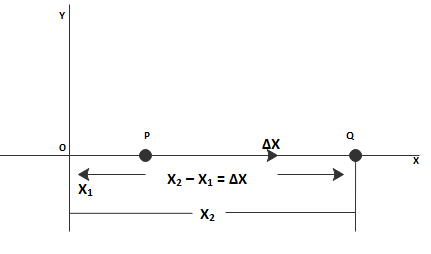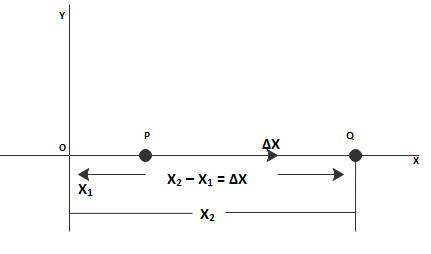
A particle moves half the time of its journey with u. The rest of the half time it moves with two velocities ${V_1}$ and ${V_2}$ such that half the distance it covers with ${V_1}$ and the other half with ${V_2}$. Find the net average velocity. Assume straight line motion.


Answer
567k+ views
Hint: Velocity is rate of change of displacement with respect to the time. For a particular path we can define instantaneous velocity and average velocity. Velocity at a particular time instant is called instantaneous velocity and velocity over a certain duration of time is average velocity. Hence average velocity is total displacement upon time. Since particles are moving in straight line distance and displacement are the same.
Formula used:
${\text{Average velocity = }}\dfrac{{{\text{total displacement}}}}{{{\text{total time}}}}$
${\text{distance = speed x total time}}$
$S = ut$
Complete step-by-step answer:
Let us assume total time of travel be 2t.
In the first half time period it had travelled ‘S’ distance. Its velocity is given as ‘u’ as path is straight line this will be its speed too
Speed is the total distance travelled(S) in given time interval(t) and we have formula which relates speed, total distance travelled, time which is $S = ut$

Let the rest of the distance be 2d. Let us assume It had covered first ‘d’ distance in ${t_1}$ seconds with velocity ${V_1}$ and next ‘d’ distance in ${t_2}$ seconds with velocity ${V_2}$
We have
${t_1} = \dfrac{d}{{{V_1}}}$
${t_2} = \dfrac{d}{{{V_2}}}$
And ${t_1} + {t_2} = t$
i.e ${t_{}} = \dfrac{d}{{{V_1}}} + \dfrac{d}{{{V_2}}}$ that gives us $2d = \dfrac{{2{V_1}{V_2}t}}{{{V_1} + {V_2}}}$
Average velocity = total displacement/total time
Total displacement = S+2d = $ut + \dfrac{{2{V_1}{V_2}t}}{{{V_1} + {V_2}}}$
Total time is 2t
Now net average velocity will be $\dfrac{{ut + \dfrac{{2{V_1}{V_2}t}}{{{V_1} + {V_2}}}}}{{2t}} = \dfrac{{u({V_1} + {V_2}) + 2{V_1}{V_2}}}{{2({V_1} + {V_2})}}$
Hence answer will be $\dfrac{{u({V_1} + {V_2}) + 2{V_1}{V_2}}}{{2({V_1} + {V_2})}}$
Additional Information: If a body is travelling in a straight path without reversing its direction then instantaneous velocity of that body will be equal to average velocity at every instant of its travel. Then we call distance and displacement equal.
Note: Here total time travelled is divided into two halves and particle travelled with different velocities and we are asked to find out net average velocity while some times total distance travelled is divided into two halves and we will be asked to find out average velocity then we should follow the method of finding total time it travelled in terms of distance(as we know distance) and substitute in average velocity formula.
Formula used:
${\text{Average velocity = }}\dfrac{{{\text{total displacement}}}}{{{\text{total time}}}}$
${\text{distance = speed x total time}}$
$S = ut$
Complete step-by-step answer:
Let us assume total time of travel be 2t.
In the first half time period it had travelled ‘S’ distance. Its velocity is given as ‘u’ as path is straight line this will be its speed too
Speed is the total distance travelled(S) in given time interval(t) and we have formula which relates speed, total distance travelled, time which is $S = ut$

Let the rest of the distance be 2d. Let us assume It had covered first ‘d’ distance in ${t_1}$ seconds with velocity ${V_1}$ and next ‘d’ distance in ${t_2}$ seconds with velocity ${V_2}$
We have
${t_1} = \dfrac{d}{{{V_1}}}$
${t_2} = \dfrac{d}{{{V_2}}}$
And ${t_1} + {t_2} = t$
i.e ${t_{}} = \dfrac{d}{{{V_1}}} + \dfrac{d}{{{V_2}}}$ that gives us $2d = \dfrac{{2{V_1}{V_2}t}}{{{V_1} + {V_2}}}$
Average velocity = total displacement/total time
Total displacement = S+2d = $ut + \dfrac{{2{V_1}{V_2}t}}{{{V_1} + {V_2}}}$
Total time is 2t
Now net average velocity will be $\dfrac{{ut + \dfrac{{2{V_1}{V_2}t}}{{{V_1} + {V_2}}}}}{{2t}} = \dfrac{{u({V_1} + {V_2}) + 2{V_1}{V_2}}}{{2({V_1} + {V_2})}}$
Hence answer will be $\dfrac{{u({V_1} + {V_2}) + 2{V_1}{V_2}}}{{2({V_1} + {V_2})}}$
Additional Information: If a body is travelling in a straight path without reversing its direction then instantaneous velocity of that body will be equal to average velocity at every instant of its travel. Then we call distance and displacement equal.
Note: Here total time travelled is divided into two halves and particle travelled with different velocities and we are asked to find out net average velocity while some times total distance travelled is divided into two halves and we will be asked to find out average velocity then we should follow the method of finding total time it travelled in terms of distance(as we know distance) and substitute in average velocity formula.
Recently Updated Pages
Why are manures considered better than fertilizers class 11 biology CBSE

Find the coordinates of the midpoint of the line segment class 11 maths CBSE

Distinguish between static friction limiting friction class 11 physics CBSE

The Chairman of the constituent Assembly was A Jawaharlal class 11 social science CBSE

The first National Commission on Labour NCL submitted class 11 social science CBSE

Number of all subshell of n + l 7 is A 4 B 5 C 6 D class 11 chemistry CBSE

Trending doubts
What is meant by exothermic and endothermic reactions class 11 chemistry CBSE

10 examples of friction in our daily life

One Metric ton is equal to kg A 10000 B 1000 C 100 class 11 physics CBSE

1 Quintal is equal to a 110 kg b 10 kg c 100kg d 1000 class 11 physics CBSE

Difference Between Prokaryotic Cells and Eukaryotic Cells

What are Quantum numbers Explain the quantum number class 11 chemistry CBSE




